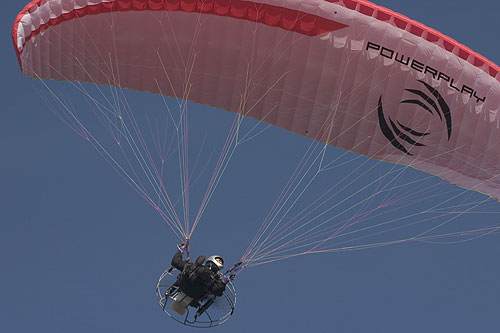What Is Ultralight Helicopter?
It is actually a skeleton of a traditional helicopter without the protection of the normal shell. It has two propellers: one on the top, which has a diameter from 3.5m to 7.5m, depending on the model, and one on the tail, with a diameter between 0.6m and 1.2m. The average weight of an empty ultralight heli is between 65 and 85 kg. The weight of the pilot can be up to 125 kg. However, you will hardly find two ultralight helicopters that are similar as a construction and main characteristics.
How To Get An ultralight Helicopter?
There are two main possibilities: to purchase a ready-made one or to build your own. Maybe you will be interested in the second option. There are quite a good number of models, which you can buy in a kit form. This means that you have to fit the pieces of your aircraft together before the first fly. However, it is necessary to know that besides the enthusiasm this is not a simple project.
Where To Start?
First answer the questions: What have you built till now? How big is your experience in reading construction plans and assembling pieces? What about the engines: do you have any idea about them?
If your experience is close to zero, the ultralight helicopter should probably be your second building project and you would start with something easier. But if you can rely on the help of someone experienced and your enthusiasm is so big� go ahead.
What To Buy?
There are many producers of ultralight helicopters, which offer different possibilities. The cheapest way to own a heli is to purchase only construction plans and to bring together all necessary parts of your aircraft by your own. This is the longest way and requires very good background in construction of machines and aircrafts. The average price of construction plans in reduced formats is $90 to $200. The plans of the ultralight helicopter G-1 cost only $32.95. An instruction manual costs in addition $35. The same is the price of a video instruction. Usually the plans in large format have double price.
If you prefer not to to spend so much time you may look for already prepared ultralight helicopter kits, which are offered by all production companies. The prices vary from $2495 for the kit of the famous Mosquito, to $15995 for a complete kit of Kestrel Jet Helicopter. You can find in between several prices for the different parts of the helies: airframe with tail section, main control hub, rotor head, engines, etc.
Let me give an example with the well-known Adams-Wilson ultralight helicopter called Choppy. It is a single-seat heli, the most famous among the homebuilt aircrafts. If you buy the complete kit you have to spend $22,995. However, if you decide to purchase separate parts you should know that the airframe of the Choppy is $3495, the same is the price of the rotor head and the price of the main control hub is $2495. The experimental version of the Choppy (with gearbox instead of a cog-belt drive system and different engine) costs almost $30000. All Choppy kits include a cockpit as well.
What else you need to build your helicopter?
Most of the kits are prepared so as to be built with ordinary tools and minimum additional costs at home. You don�t need special workshop, but the most frequently working tools are required.
The rest is time and enthusiasm. Keep your enthusiasm as long as possible, as you will need plenty of it until you reach the first fly with your own ultralight helicopter.












